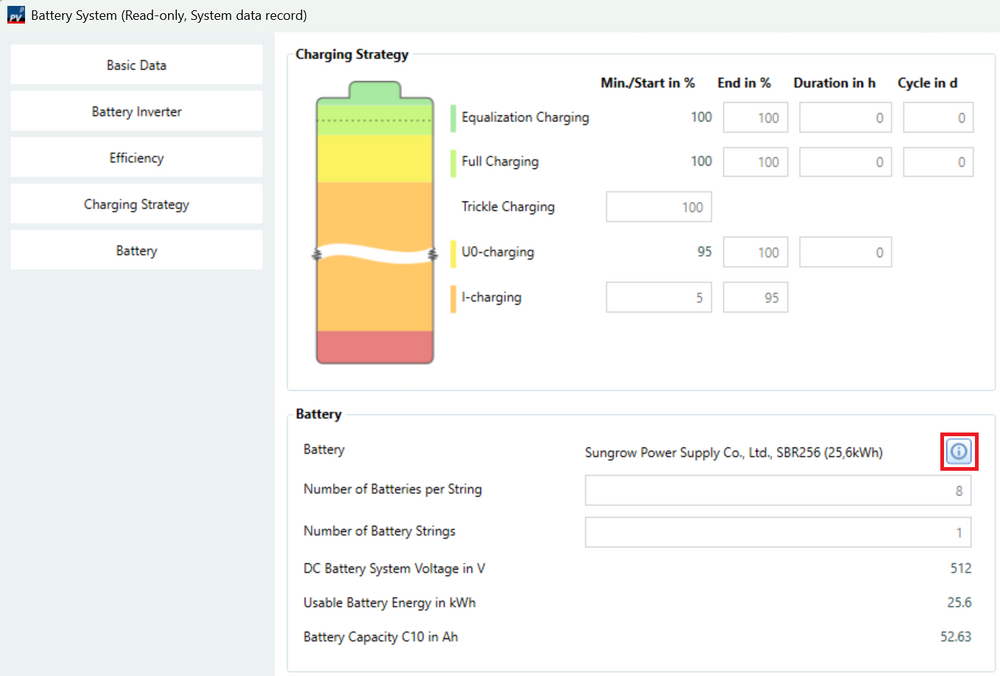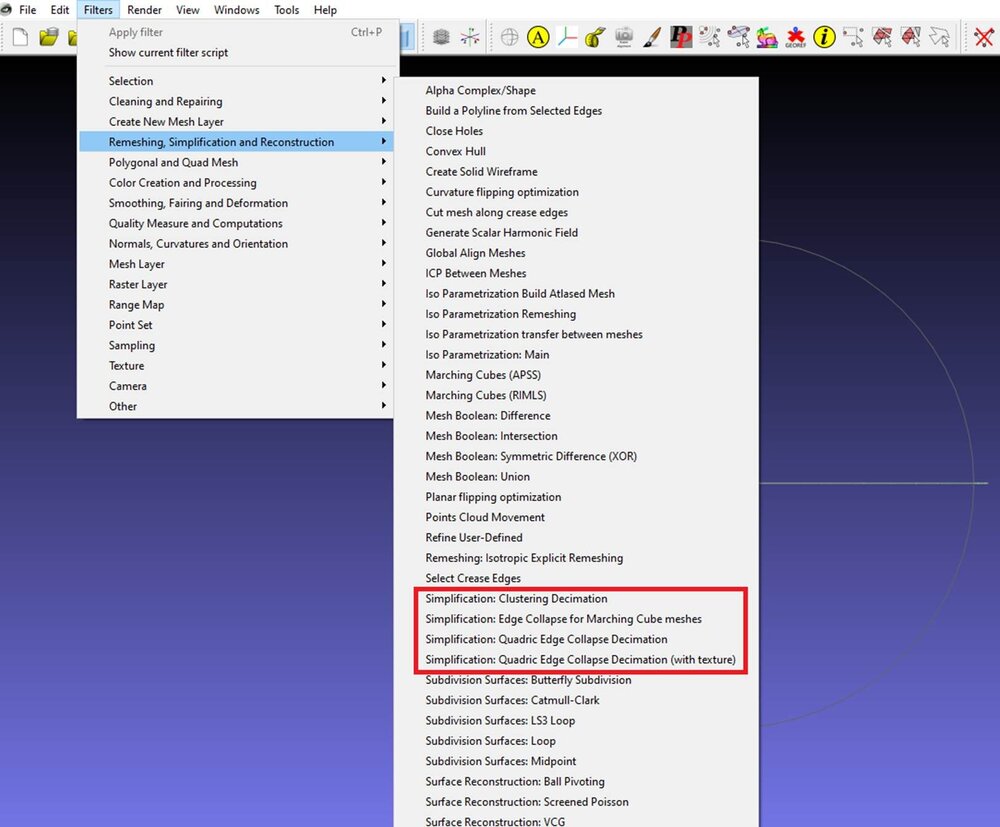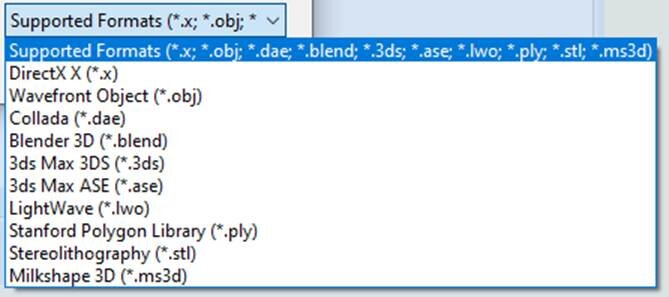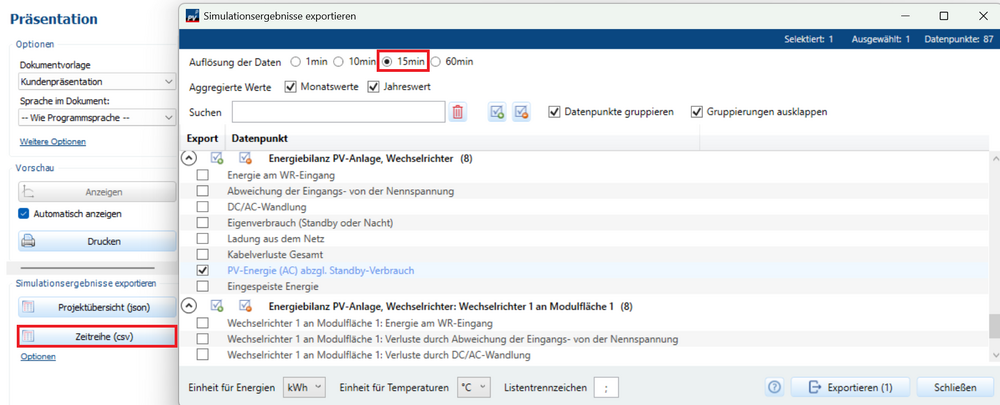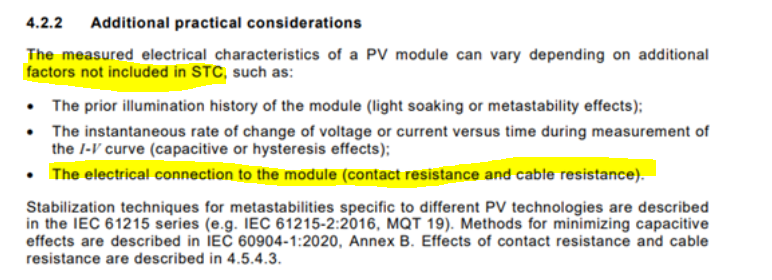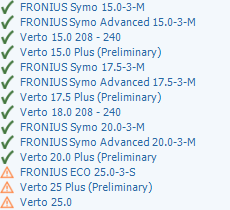All Activity
- Last week
-
Dear dvd, Thank you for your inquiry. In our opinion, module cables are taken into account in the STC test. The module manufacturer or the testing institute that certified the module you are using can confirm this for you.
-

Where in PVSol can i set the DoD and the SoC ?
hotline_oh replied to Johan van t Wout's topic in PV*SOL
Dear Johan van t Wout, Thank you for your inquiry. Each battery system data set has a corresponding battery data set. Here you can enter or calculate the discharge cycles for different depths of discharge. The state of charge is a parameter that is output in the simulation results. -

MAX. Input Current in A , MAX short circuit current DC in A
hotline_oh replied to PETER SH's topic in PV*SOL
Dear PETER SH, Thank you for your inquiry. We confirm that you enter: Max. Input Current (A)=30 Max. Short-Circuit Current (A)=37.6 You can also send us the datasheet of the missing inverter. We will then contact the manufacturer and ask them to add the missing product to our database. -
Hallo Daniel Hagn, vielen Dank für deine Anfrage. Bei der Verwendung von 3D-Modellen sind folgende Besonderheiten zu beachten: Dateigröße sollte möglichst gering sein, maximal 250 MB. Höchstgrenze der Eckpunkte ist 500.000 (Empfehlung maximal 200.000 Punkte, um noch performant arbeiten zu können). Die Texturen sollten nicht mehr als 4096 x 4096 Pixel haben. Keine Lochstrukturen oder offene Strukturen in der Silhouette des 3D-Modells. Je höher die Komplexität des 3D-Modells, desto inperformanter ist PV*SOL, auch wenn z. B. die maximale Modulanzahl noch nicht ausgeschöpft ist. Es werden folgende Formate beim 3D-Modell-Import unterstützt: MeshLab wäre ein Programm, um das 3D-Modell zu reduzieren. Wir würden im ersten Schritt mit folgenden Werkzeugen arbeiten:
-
Hallo Gerald, vielen Dank für deine Anfrage. Wenn du auf der Seite "Anlagenart, Klima und Netz" den 1-Minuten-Zeitschritt für die Simulation auswählst, dann kannst du über die Exportfunktion auf der Seite "Präsentation" die Simulationsergebnisse im 15-Minuten-Intervall exportieren. Im Diagrammeditor stehen nur das 1min-Intervall oder das 1h-Intervall zur Verfügung.
-
tansal changed their profile photo
-
tansal joined the community
- Earlier
-

Ertragssimulation von Erweiterungen
gerald@jungreithmayr.eu replied to gerald@jungreithmayr.eu's topic in PV*SOL
Wir sind immer noch mit diesem Thema beschäftigt. Inzwischen basteln wir uns die Verbrauchslastgänge irgendwie immer besser zusammen. Ist es möglich die Produktionsdaten PV-Energie (AC) vom Diagrammeditor im 15min Intervall zu bekommen? Über die Exportfunktion bekommen wir nur 1h-Intervalle. LG Gerald -
Hi everybody, I'm sizing a hybrid system, grid connected with a battery bank. I can't find where and/or how I can do the settings doe Depth of Discharge and State of Charge I hope someone can help me out Many thx And for sure have a blessed and healthy 2026
-
Hi, I wanted to copy this inverter and add a new inverter whose specifications are close to the copied inverter. Do I need to add the MPPT numbers of Max. Input Current (A)=30, Max. Short-Circuit Current (A)=37.6 for new inverter or is there no need to add the numbers? New inverter: This is where I need to enter the numbers: With the above specifications, what number should I enter specifically in the boxes?
-
Daniel Hagn joined the community
-
Sehr geehrte Damen und Herren, wir haben eine Fehlermeldung beim Importieren einer .obj – Datei und wissen nicht woran es liegen könnte. Die Datei lässt sich bei uns nicht importieren. PV*SOL premium 2022 (Einzelplatzlizenz) Die Fehlermeldung beim Einfügen in die "Neue-3D-Anlage lautet: Die Anzahl an Eckpunkte des 3D-Modell überschreitet zusammen mit denen ggf. bereits vorhandenen 3D-Modelle das Maximum
-
Hallo DSchwer, danke für das Feedback. Wir sind auf jeden Fall weiter an der Entwicklung dran und daher auch sehr dankbar für Feedback. Das mit dem Zusammenfassen der Lastprofile aus Messwerten ist ein guter Punkt. Das ist schon früher so gewesen, um die Projektdateien nicht unnötig aufzublähen, da diese Lastprofile sehr groß sein können (groß im Sinne von Megabyte). Die Lastprofile aus Tagesverläufen hingegen kann man kopieren, vielleicht hilft das erstmal weiter? Eine weitere Möglichkeit für einen Work-Around wäre, sich nach der Simulation das Lastprofil ("1 Personenhaushalt") zu exportieren und dann als beliebig benennbares Lastprofil wieder zu importieren. Ebenfalls schöne Feiertage und einen guten Rutsch, viele Grüße, Martin
-
Hallo Martin, ich teste dieses Feature gerade ein wenig. Es stört, dass gleichnamige Lastprofile ("1 Personenhaushalt") zu einem einzelnen Verbraucher zusammengefasst werden. Insbesondere kann ich die Standardlastprofile nicht kopieren bzw. ihren Namen ändern. Damit gibt es für mich keine einfache Möglichkeit ein Mehrfamilienhaus abzubilden. Die Ergebnisse finde ich auch unklar. Der einzige Unterschied, den ich gefunden habe, ist bei der Vergütung und Ersparnisse. Darauf beziehe ich mich. Hier sieht man, wie viel unter welchem Tarif eingespart wird. Das macht Sinn für einen Haus- und einen Wärmepumpentarif. Aber meine Wohnungen kann ich damit nur aufwändig vergleichen bei unterschiedlich benannten Tarifen (Familie A, Daten Reststromtarif; Familie B, Daten Reststromtarif,....). Es hilft natürlich trotzdem, aber ich denke es wäre nicht weit weg davon, sehr viel nützlicher zu sein. Seit ihr hier weiter an der Entwicklung oder war das nur ein Nebeneffekt für Wämepumpentarife? Liebe Grüße und schöne Feiertage
-
Hi, we have a discussion with a contractor. According to their point of view the module cables should be included in the voltage drop and loss calculations. They refer to the image in annex. Could you please clarify if the module cables are realy included in the STC test? Can you deliver a reference?
-
Hallo Cordula, ja, mit dem neuen Feature "Es können jetzt mehrere Bezugstarife ausgewählt und unterschiedlichen Verbrauchern frei zugeordnet werden." Dadurch kann man für jede Mietpartei einen Verbrauch und eigenen Tarif festlegen. Die Ersparnisse werden dann auch separat für jeden Verbraucher (Mietpartei) ausgegeben. Beste Grüße, Martin
-
Hallo, gibt es inzwischen Neuigkeiten zur Simulation von Mieterstrommodellen?
-
Hallo Markus, vielen Dank für deine Anfrage. Ja, das ist leider ein Bug, der mit einem Update behoben werden muss. Was kannst du übergangsweise tun? Dupliziere den ersten Wechselrichter:
-
Hallo, wenn man 2 Dächer gemeinsam verschaltet und dann mit 2 oder mehreren Wechselrichtern arbeiten will kann man bei dem zweiten WR nicht die unterschiedlichen Dachflächen bei den MPP Trackern auswählen.
-
Vielen Dank!
-
Guten Tag Ray-AET, der Hersteller hat den Datensatz der Batterie geändert. Das nächste Datenbank-Update ist für morgen, den 12.12.2025, geplant.
-
Dear Jake, Thank you for your inquiry. We will contact the manufacturer and ask them to add the missing products.
-
Hello, Fronius now offer some smaller Verto models (15, 17.5, 20.0) as well as bringing in a new version of the 25.0 with only 3 MPPTs, however, none of these are currently in PVSOL. The closest are the 'Plus' variants but these have slightly different technical characteristics so don't provide an exact result. Is there a plan to add these smaller models soon? Thanks
-
Dear J. Esteban, Thank you for your inquiry. Automatic cable dimensioning is only available for roof-parallel systems, not for elevated systems or systems with polystring connection. Since your system is very uniform and the module tables are mounted very flat, you would have the option of treating it like a rooftop system, i.e., creating a pitched roof with minimal height and the same number of modules with roof-parallel mounting, in order to be able to carry out the automatic cable dimensioning.
- 10 replies
-
- 1
-

-
- cable plan
- cabling
-
(and 1 more)
Tagged with:
-
Guten Tag Ray-AET, vielen Dank für Ihre Rückmeldung. Sie haben die Möglichkeit, den Datensatz der Batterie zu kopieren (Rechtsklick --> Kopieren) und neu abzuspeichern. Im neuen Datensatz können Sie Änderungen vornehmen. Anschließend müssen Sie auch den Datensatz für das Batteriesystem kopieren und im neu abgespeicherten Datensatz den neuen Batterie-Datensatz übernehmen.
-
Dear dls energy, Thank you for your inquiry. Please send the project file (*.pvprj) to hotline@valentin-software.com so that we can take a look at it.
-
Vielen Dank für Ihre Antwort. Nach den Tests ist es tatsächlich der Innenwiderstand, der das Problem verursacht. Ich habe Alpha bereits kontaktiert, aber noch keine Antwort erhalten. Kann dieser Wert manuell geändert werden?
-
Bonjour, Sur une simulation pour un de mes clients en deye sun20k avec les batteries bos G, je pense qu'il y a un bug, le logiciel affiche 3 ans de durée de vie pour les batteries ce qui me paraît peu .Auriez vous une solution a ce problème ??? Merci

